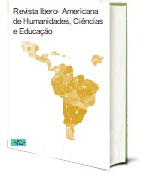COVID-19 AND PULMONARY THROMBOEMBOLISM: REVIEW OF PATHOPHYSIOLOGICAL MECHANISMS
DOI:
https://doi.org/10.51891/rease.v8i11.7897Keywords:
Pulmonary thromboembolism. COVID-19. SARS-CoV-2.Abstract
COVID-19, so named by the World Health Organization (WHO), originated from the SARS-CoV-2 virus and began in 2019 in China, spreading around the world being responsible for an extensive pandemic. Clinical manifestations were presented in various ways, from mild manifestations to severe conditions. A relatively high frequency of thromboembolic disease events associated with the coronavirus can be observed. This review proposes to demonstrate the occurrence of pulmonary thromboembolism as a result of COVID-19. A research was made in the PubMed, MEDLINE, LILACS and Scielo databases with the following descriptors: “COVID-19 and pulmonary thromboembolism” between the years 2020 and 2022. The search yielded 560 results, of which 483 articles were excluded by title and abstract analyses, leaving 77 results and after a new review, 10 articles were selected for the final study. The mechanisms of thromboembolic processes are not yet well defined, but in severe infections it has been attributed to an inflammatory response, hypoxia, disseminated intravascular coagulation and immobilization of patients, mainly hospitalized in the Intensive Care Unit (ICU). Concluded that the incidence of pulmonary embolism was higher in ICU patients, particularly in males and in the elderly. It was also observed that, in some cases, the occlusion of the pulmonary artery detected by imaging studies was caused by thrombi formed in loco, rather than emboli from thrombi in peripheral veins as a result of an inflammatory process.
Downloads
Downloads
Published
How to Cite
Issue
Section
Categories
License
Atribuição CC BY

